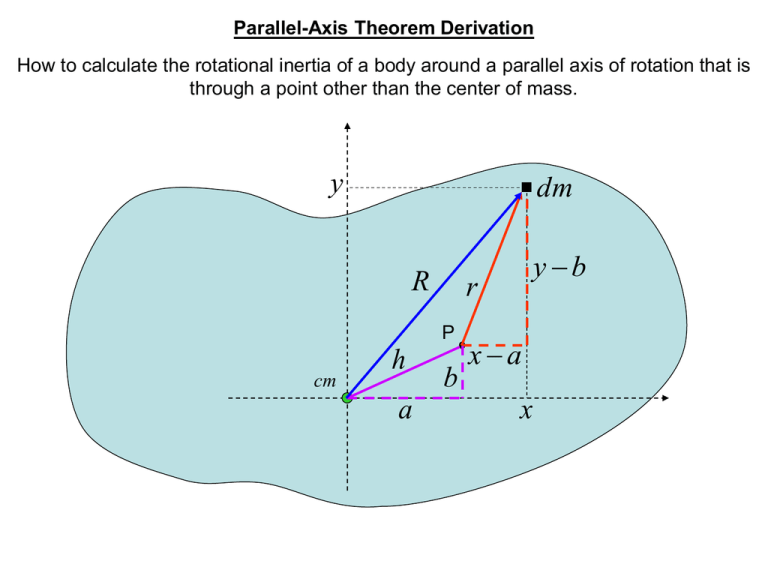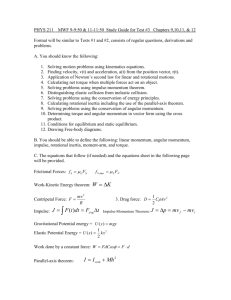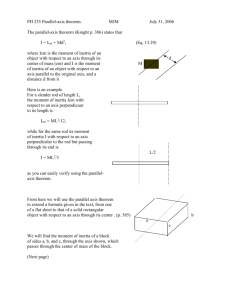Parallel-Axis Theorem Derivation (print version)
advertisement

Parallel-Axis Theorem Derivation How to calculate the rotational inertia of a body around a parallel axis of rotation that is through a point other than the center of mass. y dm R r P cm h a y b b xa x Parallel-Axis Theorem Derivation How to calculate the rotational inertia of a body around a parallel axis of rotation that is through a point other than the center of mass. I r 2 dm I x a y b dm 2 2 I x 2 2ax a 2 y 2 2by b 2 dm I x 2 y 2 2ax 2by a 2 b2 dm I x 2 y 2 dm 2a x dm 2b y dm a 2 b 2 dm Parallel-Axis Theorem Derivation How to calculate the rotational inertia of a body around a parallel axis of rotation that is through a point other than the center of mass. I x 2 y 2 dm 2a x dm 2b y dm a 2 b 2 dm But 2a x dm 2axcm 0 2b y dm 2bycm cm 0 I x 2 y 2 dm a 2 b 2 dm I R 2 dm h 2 dm Parallel-Axis Theorem Derivation How to calculate the rotational inertia of a body around a parallel axis of rotation that is through a point other than the center of mass. I R dm h dm 2 2 I I cm h2dm But h2 is constant. I I cm h2 dm I I cm Mh Where 2 Parallel-Axis Theorem M total mass of the body h distance between the center of mass and the parallel axis of rotation Parallel-Axis Theorem Example Two equal masses of 2.0 kg each are separated by a thin, massless rod 4.0 m long. What would its rotational inertia be about an axis perpendicular to the rod and through one end? Method 2 Parallel-Axis Theorem 2.0 kg 2.0 kg L Method 1 I I cm Mh2 2 I 2 I mi ri2 I I mr12 mr22 I i 1 I mL2 I 32 kgm2 I 1 2 1 mL 2m L 2 2 1 2 1 2 mL 2m L 2 4 1 2 1 2 mL mL 2 2 mL2 I 32 kgm2



